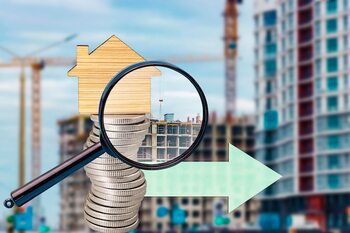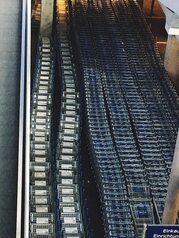The Importance of Accessibility in the Appreciation of Your Home

Accessibility is a crucial factor that influences the added value of your home. In a world where time and convenience are essential, having a well-located property can make the difference between a secure investment and a missed opportunity. This article will guide you through how accessibility not only improves your quality of life but also increases the value of your property, making it an attractive asset for future buyers. Discover why choosing the right area is key to maximizing your investment.
1. Understanding Surplus Value: Definition and Key Factors
Capital gains refer to the increase in the value of a property over time, and it is a fundamental concept for any property owner or real estate investor. This increase can result from various factors, such as market demand, improvements made to the home, and, of course, location. A property located in an accessible and well-connected area tends to experience greater appreciation in value due to its appeal to both buyers and tenants. This makes understanding capital gains vital for maximizing your return on investment. Among the key factors influencing capital gains is the quality of life offered by the environment. Proximity to essential services such as schools, hospitals, public transportation, and recreational areas significantly increases a property's appeal. Additionally, a safe neighborhood with good infrastructure not only enhances the daily experience of its residents but also ensures that the demand for properties in that area remains high. By considering these elements when purchasing a home, you can make informed decisions that will positively impact the future value of your real estate investment.
2. Accessibility: Beyond Public Transport
Accessibility goes beyond mere access to public transportation; it involves a set of factors that facilitate the daily lives of residents. Proximity to essential services such as supermarkets, hospitals, and schools can be crucial for those looking for a home. When a property is located in an area where everything necessary is within walking distance, it not only improves the quality of life but also creates an attractive environment for future buyers. Young families, for instance, greatly value living close to educational institutions and recreational areas, making these properties highly sought after in the market.
Additionally, accessibility includes aspects such as safe and well-maintained pedestrian routes, access to parks and public spaces, as well as options for recreational activities. A neighborhood with adequate infrastructure that promotes biking or walking not only encourages a healthy lifestyle but also adds significant value to the property. Current buyers are increasingly interested in sustainable and pedestrian-friendly environments; therefore, having these features can be a decisive factor when evaluating the price and appreciation of a home. In this sense, investing in a well-connected and accessible property is undoubtedly a smart strategy to maximize its long-term value.
3. High Demand Areas: Where to Invest?
When it comes to investing in real estate, identifying areas with high demand is essential to ensure good appreciation. Areas close to shopping centers, prestigious schools, and public transport services are usually the most sought after. These features not only enhance the daily convenience of residents but also attract families and professionals looking for an accessible environment. Investing in a well-connected area can guarantee not only the stability of your property's value but also its long-term appreciation, as more people will be willing to pay a high price to live there.
Another key aspect when evaluating the demand for an area is urban development and future projections. Areas experiencing significant growth or renewal, such as new infrastructures or the arrival of major companies, tend to be highly attractive to investors. Observing urban planning and demographic trends can provide you with valuable information on where to make your investment. Thus, choosing a strategic location can translate into a considerable increase in the value of your home in the future, making it not only a place to live but also a solid financial investment.
4. The Relationship between Schools and Property Value
The relationship between schools and property value is a fundamental aspect that many buyers consider when purchasing a home. The presence of quality educational institutions in an area not only attracts families with children but also becomes a determining factor for the increase in property value. Areas close to good schools tend to have higher demand, contributing to sustained and attractive appreciation. This is because parents seek a safe and enriching environment for their children, and are willing to pay more to live in these neighborhoods. Moreover, access to well-rated schools can be seen as an indicator of growth and stability within the community. Properties located near these institutions often enjoy greater appreciation over time due to the positive perception they generate among potential buyers. Thus, it is not just about finding a suitable home, but also about choosing a neighborhood where education is a priority. Therefore, investing in property near good schools not only enhances family quality of life but also represents a smart strategy to maximize the return on your real estate investment.
5. Green and Recreational Spaces: An Additional Attraction
Green and recreational spaces are an additional attraction that not only enrich the quality of life of residents but also elevate the value of surrounding properties. The presence of parks, gardens, and recreational areas promotes an active and healthy lifestyle, which is especially appreciated by families and young people. These spaces not only provide a respite from urban hustle but also create a sense of community, where neighbors can interact and enjoy the outdoors. This connection with nature becomes a decisive factor for many buyers when evaluating a property.
In addition, green spaces are a magnet for those seeking tranquility and mental well-being. Studies have shown that living near natural areas reduces stress and improves overall health. Therefore, a home located in an area with abundant recreational options is more likely to attract future buyers willing to pay more for that advantage. In summary, the inclusion of green spaces not only beautifies the urban environment but also acts as a catalyst to increase the property's value, making it an irresistible option in the real estate market.
6. The Importance of Nearby Services: Supermarkets and Health
Proximity to essential services such as supermarkets and health centers is crucial for the quality of life of residents. A home located in an area where these services are easily accessible not only facilitates daily tasks but also contributes to a healthier and more convenient lifestyle. The ability to make quick purchases without the need for long commutes or having nearby medical care can be a significant attraction for families, professionals, and seniors, which increases the demand for properties in these areas and, consequently, their appreciation.
Moreover, living near supermarkets and medical centers not only represents convenience but also security. In emergency situations or unforeseen events, having nearby medical attention can be crucial. This perception of safety translates into greater interest from potential buyers looking for an environment where they can feel at ease regarding their well-being and that of their loved ones. Thus, accessibility to these services not only enhances the daily experience of the resident but also acts as a determining factor in the future value of the property.
7. Impact of Urban Development on Accessibility
Urban development has a significant impact on the accessibility of residential areas, which in turn affects the value of homes. As cities grow and transform, the infrastructure and available services play a crucial role in how easily residents can access schools, hospitals, public transportation, and commercial areas. A well-planned neighborhood not only facilitates movement within the community but also promotes a more active and healthy lifestyle for its inhabitants. This connectivity is a magnet for potential buyers, who value not only the home itself but also the surrounding environment and amenities.
Moreover, sustainable urban development is gaining prominence in many localities, prioritizing the creation of green spaces and pedestrian paths. This not only improves the quality of life by reducing car usage and encouraging outdoor activities but also transforms previously undervalued areas into attractive destinations. Properties located near these modern developments tend to experience an increase in their value due to the positive perception of the neighborhood. Therefore, understanding how urban development influences accessibility is essential for any property owner or investor looking to maximize the return on their real estate investment.
8. How to Evaluate Mobility in Your Chosen Area
Evaluating mobility in your chosen area is a fundamental step to ensure that your home is not only a comfortable place but also a smart investment. To begin, look at the available transportation options. Proximity to train stations, bus stops, and major routes can facilitate daily commuting, which is highly valued by potential buyers. Additionally, consider the pedestrian and cycling infrastructure; areas with wide sidewalks and safe bike lanes are often more attractive to those who prefer alternative modes of transport. By analyzing these factors, you can visualize how mobility directly impacts the quality of life of its residents.
Another aspect to consider is accessibility to essential services such as supermarkets, hospitals, schools, and recreational centers. Proximity to these facilities not only enhances daily convenience but also highlights the neighborhood's appeal for families and young professionals. Taking a tour of the area at different times of the day will allow you to experience real traffic and wait times, providing you with a clearer perspective on what it's like to live in that area. Remember that a good network of complementary services not only increases the overall well-being of its residents but also elevates the property's value by making it more desirable in a competitive market.
9. Strategies to Improve Your Home's Accessibility
Home accessibility not only refers to the ability to move within the house but also to its connection to the environment. To improve your home's accessibility, start by evaluating and optimizing the access routes. Ensure that the entries are wide and well-lit, and consider installing ramps or handrails if necessary. Additionally, facilitating access to spaces like the bathroom and kitchen by removing obstacles can make a significant difference. These modifications will not only make your home more functional for everyone but will also increase its appeal to a diverse market.
Another key strategy is to consider smart technology as a way to enhance accessibility. Devices like smart thermostats, voice-controlled lights, and virtual assistants can simplify daily tasks and increase comfort at home. Implementing these technological solutions not only improves daily well-being but can also be a highlight when selling your property. In summary, by investing in improvements that promote both physical and technological accessibility, you will significantly increase the perceived value of your home in a competitive market.



